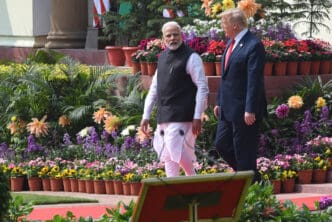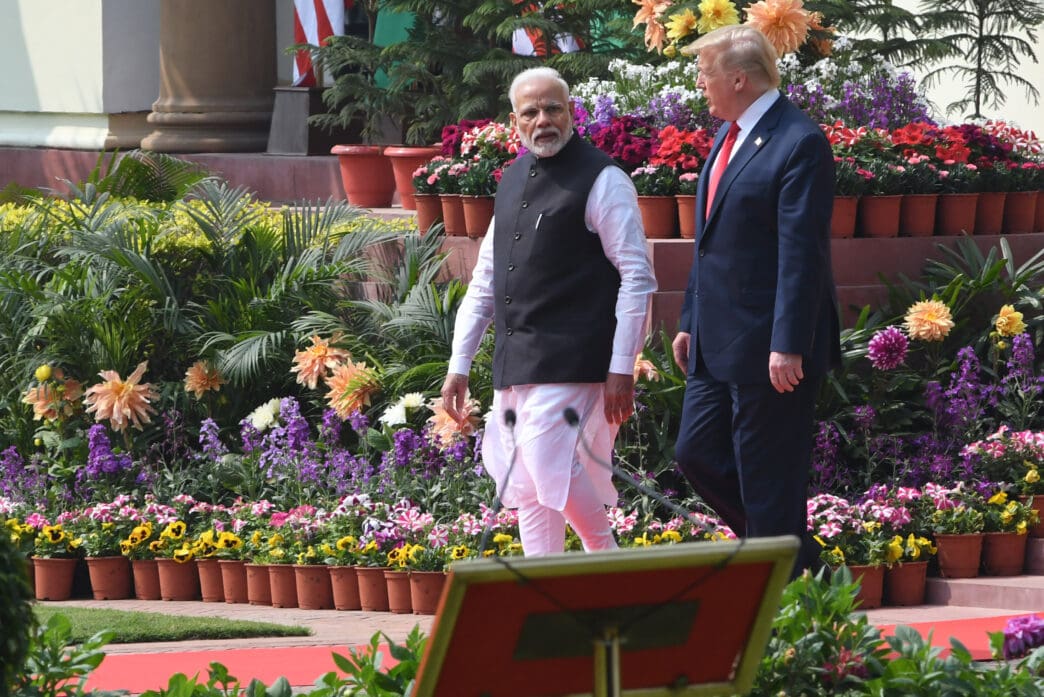Executive Summary
The Story So Far
Why This Matters
Who Thinks What?
New trade negotiations between Washington and New Delhi are underway this week, focusing on tariffs imposed by the administration of President Donald Trump on Indian imports. India’s Prime Minister Narendra Modi has maintained a firm stance against these economic pressures, leveraging India’s international standing rather than diplomatic overtures to push for a compromise from the United States.
Background to Trade Tensions
The current round of talks follows a period of strained relations, despite a historically warm personal rapport between President Trump and Prime Minister Modi. President Trump had previously imposed 25 percent tariffs on Indian goods in July, followed by additional 25 percent tariffs in early August, bringing the total tax to 50 percent on certain products like jewelry, shrimp, and clothing. These measures were aimed at rebalancing a trade deficit with India, which the US estimated at over $45 billion.
The tariffs were introduced even as India’s exports to the United States nearly doubled from $46 billion to $87 billion between 2016 and the present. Tensions escalated after weeks of unproductive bilateral discussions, marked by exchanges on social media, including President Trump’s characterization of India as a “dead economy.” This led to Prime Minister Modi reportedly declining four phone calls from President Trump.
India’s Strategic Positioning
Despite the potential for significant job losses in key Indian economic sectors, Prime Minister Modi has resisted backing down. India has highlighted its independent foreign policy, notably by maintaining imports of Russian oil and weapons, and by expressing concerns over Washington’s rapprochement with Islamabad.
Prime Minister Modi also demonstrated India’s international flexibility by appearing alongside Russian President Vladimir Putin and Chinese President Xi Jinping at a Shanghai Cooperation Organization summit in Tianjin, China, on September 1. This move was seen as a diplomatic challenge to US efforts to foster closer ties with India as a counterweight to China.
Expert Perspectives and Indian Red Lines
According to Santosh Mehrotra, a visiting professor at the University of Bath’s Centre for Development, the Trump administration may have “haven’t quite understood India” and misjudged Prime Minister Modi. Mehrotra suggested that the damage from the trade standoff would be difficult to repair, making a return to the relationship’s previous state unlikely.
India is actively exploring increased trade ties with the European Union, with European Commission President Ursula von der Leyen recently affirming India’s commitment to a trade deal this year. Mehrotra noted that India’s non-aligned status, not being a member of NATO or under the US nuclear umbrella, makes it less susceptible to geopolitical pressure.
Prime Minister Modi has outlined three key “red lines” for negotiations: no restrictions on India’s oil purchases, adherence to a “multipolar” world outlook rather than a “hegemonic USA,” and continued protection of its vital agricultural sector. The agricultural sector, which employs 40 percent of India’s workforce, remains a particularly contentious issue, with New Delhi historically using protectionist measures to shield it.
Path Forward for Negotiations
The 50 percent tariffs, effective since August 27, are impacting both Indian and US economies, including raising prices for US consumers of Indian goods. Ajay Srivastava, a former trade negotiator for India at the WTO, stated that India is prepared to lower tariffs in less sensitive sectors, but meaningful negotiations hinge on Washington reducing its tariffs.
Srivastava also contextualized India’s engagement with China, describing it as a “purely transactional partner” without the “emotional bond” India shares with the West. He concluded that India, as the world’s most populous country, aims to avoid aligning too closely with either President Trump or President Xi Jinping.
By maintaining a firm stance against punitive tariffs and US demands, Prime Minister Modi’s administration has reportedly shifted the dynamic of the trade discussions. The arrival of Washington’s negotiators in New Delhi underscores that India’s resolute position holds significant weight in these ongoing talks.








